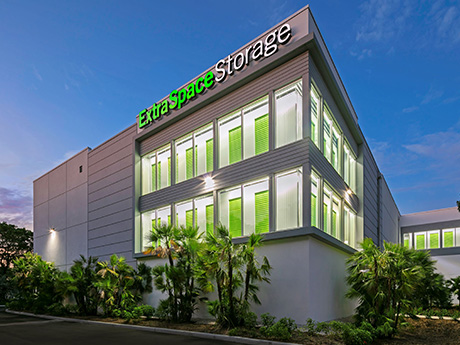By Maggie Stankiewicz, senior content manager, Storable
The self-storage industry is expanding steadily in 2025, fueled by rising housing costs, smaller homes and changing relocation patterns. As Americans seek more flexible storage options, the market is quickly adapting — rents are dropping, technology is streamlining operations and demand is rising in new regions.
According to a recent study by SelfStorage.com, the U.S. market is projected to reach $85.3 billion by 2030, pointing to continued long-term growth. Because of this sustained, projected growth, new self-storage trends are shaping how renters and operators navigate the evolving landscape.

Key Trends Driving the Market
As of early 2025, a few notable trends are shaping the self-storage industry:
- Short-term rentals are on the rise, fueled by ongoing moves and housing transitions.
- Rental prices have dropped 24 percent since 2023, down to a national average of $75 per month.
- Technology and sustainability are becoming central to both operations and customer experience.
- New Hampshire, Oregon and North Dakota top the list of fastest-growing markets for storage rentals.
- Renters are loyal, with nearly 80 percent likely to use the same storage provider even after moving.
Short Vs. Long-Term
While short-term storage demand is growing — especially among frequent movers — longer rentals are still the norm. The aforementioned study found that renters use their units for an average of 20 months, up from 16.5 months in 2020. Over one-third of renters planning a move in the next year say they’ll use storage for three to six months.
States like Oregon, North Dakota and Mississippi have seen a notable uptick in demand, driven in part by migration from expensive metro areas.
After hitting highs in the post-COVID-19 housing rush, self-storage prices have stabilized and begun to fall. From $99 in 2023, the average monthly cost has dipped to $75. Operators are using price reductions and move-in promotions to maintain occupancy as the market adjusts.
Despite price drops, customers are still willing to pay more for added features, including:
- Climate control (27 percent)
- Enhanced security (26 percent)
- 24/7 access (12 percent)
- Larger units (11 percent)
The most popular unit size remains 5 x 10, with average prices ranging from $50 to $53 per month, depending on whether the unit is climate-controlled.
Downsizing Drives Occupancy
According to our data, more than half (57 percent) of storage users rent due to the lack of space at home, reflecting a nationwide trend toward smaller living spaces. Among the most commonly stored items are:
- Furniture
- Seasonal items
- Boxes and household goods
About 40 percent of respondents in our study said they wouldn’t store important documents in a unit, reflecting a tendency to keep sensitive items in more secure or personally accessible locations.
The industry serves a broad demographic, but some patterns stand out:
- Women make up 57 percent of renters.
- Gen X and Baby Boomers are the primary age groups.
- Only 10 percent of renters are under age 24.
- Nearly half of all renters earn less than $75,000 per year.
- 73 percent of units are used for personal storage rather than business.
- Brand loyalty is strong: 79 percent of renters say they’re at least somewhat likely to stay with the same company if they move. This loyalty makes customer experience and convenience a high priority for operators.
Industry Outlook, Changes
With over 52,000 facilities in the United States and 14.6 million households using self-storage, the sector remains highly fragmented but competitive. Five major chains control 37 percent of the market, while small businesses still operate 40 percent of all facilities.
Occupancy rates hover around 85 percent, and total U.S. storage space exceeds 2 billion square feet.
Looking forward, two aspects of operations are gaining attention: sustainability and technology/convenience
Operators are upgrading lighting, HVAC systems and climate controls to reduce energy use. Self-storage also has a broader environmental benefit: It helps keep usable goods out of landfills, supporting a more circular economy.
“The more options people have to extend the life of their personal possessions, the less need they have to purchase new items,” says Al Harris, content manager at Storable.
Online rental platforms, smart security features and mobile access tools make the process easier for customers. Drive-up access and streamlined check-in processes are now competitive differentiators.
What’s Next for Self-Storage?
Self-storage is no longer just a backup plan — it’s a flexible, affordable solution for a changing housing market. Whether downsizing, relocating or simply seeking more space, Americans are using storage in smarter, shorter-term and more tech-savvy ways.
As the market evolves, renters will benefit from falling prices, more convenient tools, and increased options for environmentally conscious storage solutions.
Maggie Stankiewicz is a writer and senior content manager who brings a decade of content expertise to the wonderful world of self-storage. By day, she blends data and human-driven storytelling to craft content you’ll actually want to read. By night, you can find her dissecting horror films or hiking trails with her dog in the foothills of North Carolina.


